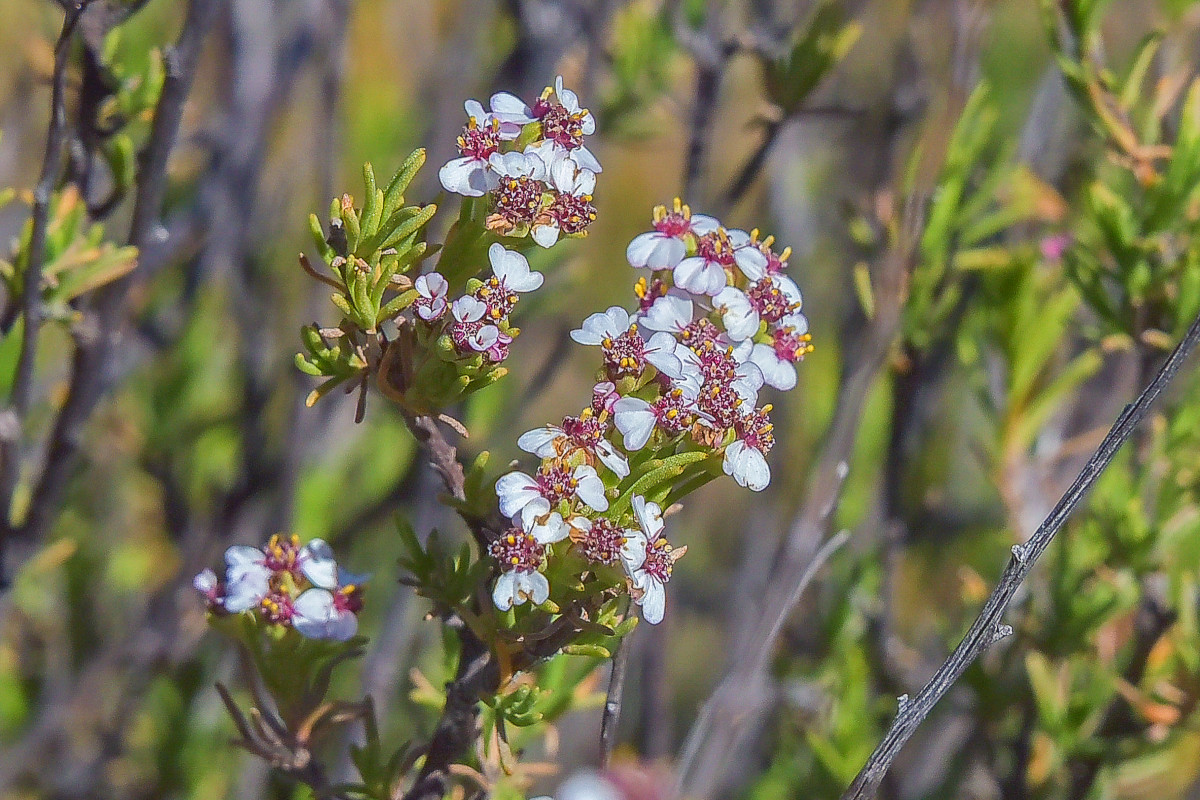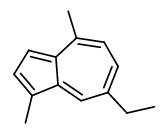Eriocephalus tenuifolius DC. - Asteraceae - Cape chamomile, Kap-Kamille
The blue essential oil from Eriocephalus tenuifolius DC. is known in commerce as Cape chamomile oil and is used in aromatherapy and fragrance formulation.
Essential oil: Aliphatic esters are the most widely represented class of compounds. 2-Methylbutyl-2-methylpropanoate (2-methylbutyl isobutyrate , 19.9-23.0%), 2-methylpropyl-2-methylpropanoate (isobutyl isobutyrate, 5.3%-12.4%) and 2-methylbutyl 2-methylbutanoate (3.4-5.6%) are the dominant esters. Terpenoid compounds made up more than 35% of the essential oil with mainly linalyl acetate (2,6-5,7%) and α-pinene (0,8-2,3%). The dark blue colored chamazulene (found 0.1-4.5%) is an artifact of the steam distillation as with the flower oils of German chamomile.
[Mierendorff, Hanco-Gisbert. „Chemische Zusammensetzung des ätherischen Öls von Eriocephalus tenuifolius DC:(Cape Chamomile Oil); Ein Vergleich von Handelsölen mit Ölen aus Wildpflanzen und Stecklingskulturen.“ (2006)] http://ediss.sub.uni-hamburg.de/volltexte/2006/3136/pdf/DissMierendorff.pdf
„The oil from E. punctulatus showed a different profile from the commercial sample which mostly contained 1,8-cineole, piperitone, yomogi alcohol and pogostol. MetAlign™ successfully discriminated between the oil obtained from the two species and this data together with multivariate analysis showed that the commercial oil was similar to E. tenuifolius oil.“
[Sandasi, Maxleene, Guy PP Kamatou, and Alvaro M. Viljoen. „Chemotaxonomic evidence suggests that Eriocephalus tenuifolius is the source of Cape chamomile oil and not Eriocephalus punctulatus.“ Biochemical systematics and ecology 39.4-6 (2011): 328-338]

Eriocephalus tenuifolius, Eastern Cape, South Africa (2025) © Brendan Cole CC BY-SA 4.0 inaturalist.org

